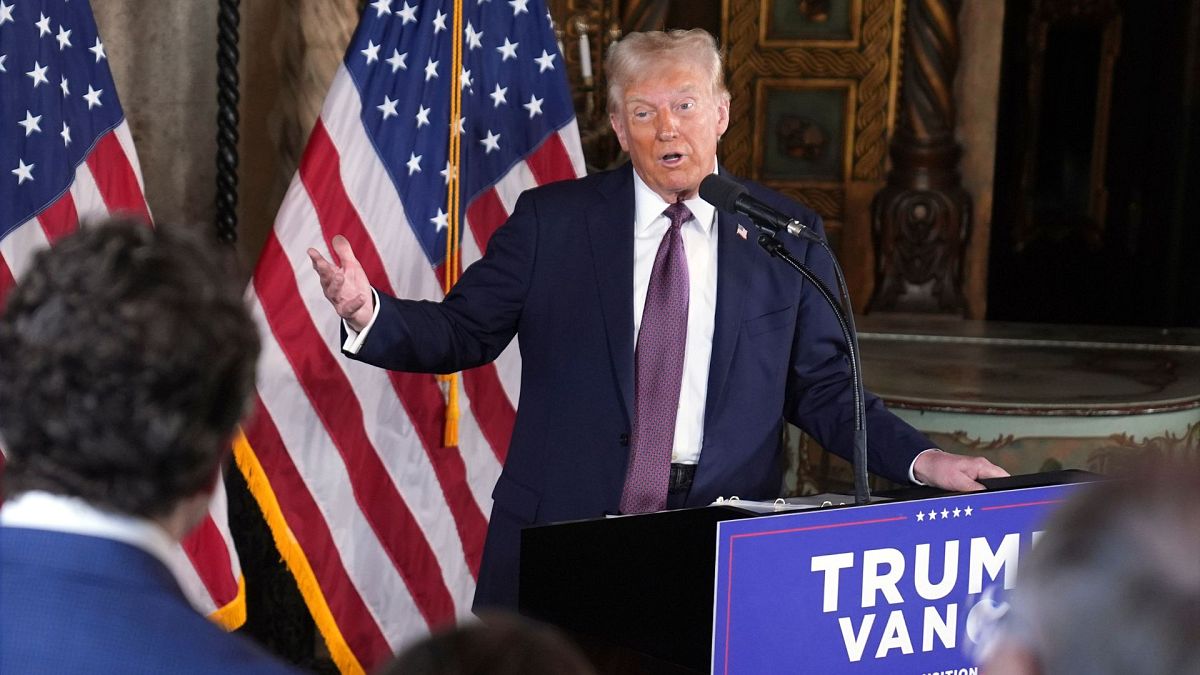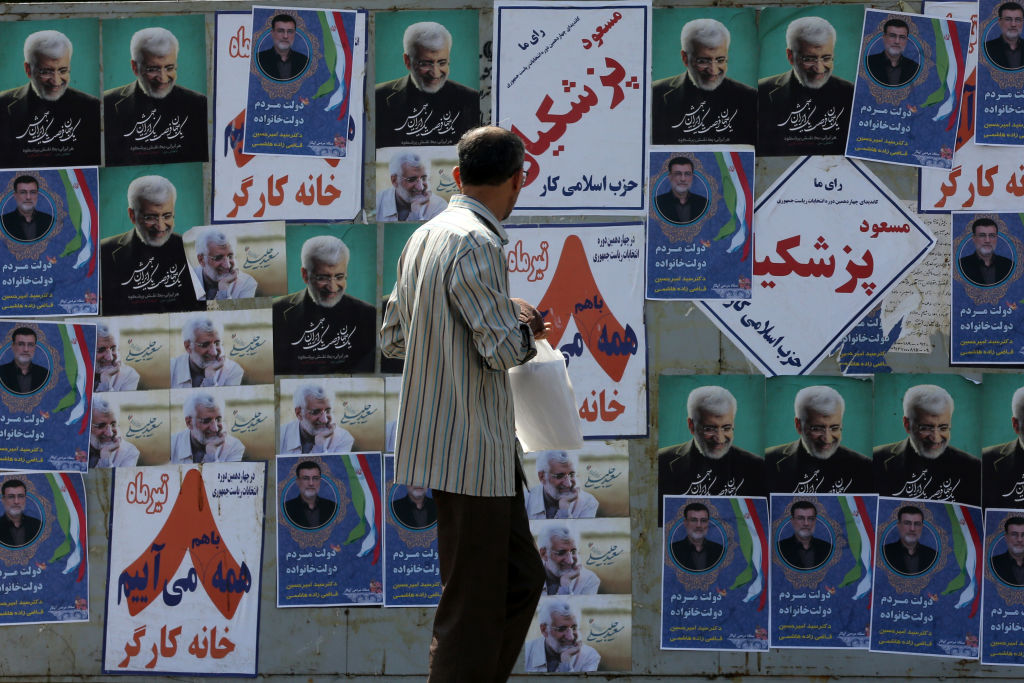Much remains unclear days after the Ukrainian army's latest surprise offensive in the Russian region of Kursk.
Kyiv has so far remained silent, as it did at the beginning of August 2024 when Ukraine advanced into the Russian region for the first time.
Meanwhile, the Russian Ministry of Defense said on Monday that an "attempted advance" by Ukrainian forces towards the area of Bolshesoldatsky, some 80 kilometers (about 50 miles) southwest of the regional capital Kursk, had been reported.
According to Moscow, four tanks, two infantry combat tanks, 16 armored combat vehicles and a mine clearance vehicle were destroyed.
It is not possible to independently verify this information.
On Sunday morning, news broke of a new Ukrainian advance in the Kursk region.
Russian war bloggers had reported on Ukrainian "convoys" and shared videos apparently taken by drones showing several Ukrainian tanks on snow-covered fields and roads.
Some mentioned the use of Western precision missiles, which also cannot be independently verified.
 Pokrovsk has been at the center of fighting for monthsImage: Evgeniy Maloletka/dpa/AP/picture alliance
Pokrovsk has been at the center of fighting for monthsImage: Evgeniy Maloletka/dpa/AP/picture allianceA push to impress Trump?
For observers, however, Kyiv's offensive did not come as a shock.
In December, Colonel Markus Reisner, an Austrian military expert, told DW that such an offensive was likely.
He said that Ukraine would attempt to demonstrate to its allies the importance of continued support for the country "right before Donald Trump takes over the US presidency."
This is precisely what we are seeing at the moment, Reisner now confirmed.
US President-elect Trump has repeatedly announced that he intends to end the Russian war against Ukraine as quickly as possible, though he has not said how he intends to bring it about. During the US election campaign, he also questioned further support for Ukraine.
However, Trump's actual plans are unlikely to become clear until after he takes office on January 20.
According to Reisner, it is also still too early to declare an "actual Ukrainian offensive" in Kursk.
"Offensive would mean that large units of the armed forces would carry out an attack at an operational level in order to achieve strategic objectives," Reisner said, adding that "what we do see so far is an advanced counterattack involving up to three brigades or parts of them."
The actual objective still seems unclear, Reisner said, explaining that several motivations could be behind such an attack.
First, the Ukrainian army has come under increasing pressure in the Kursk region and has already lost around half of the territory it occupied five months ago, he said.
Furthermore, the currently Ukrainian-controlled area of around 500 square kilometers (about 193 square miles) is exposed to Russia on three sides.
In turn, he sees that the latest advance could be an attempt to "break out of this circle."
 US President-elect Trump promised to end the war in Ukraine as soon as possible; however, Ukrainian President Volodymyr Zelenskyy hopes support from the West will continueImage: Julia Demaree Nikhinson/AP/picture alliance
US President-elect Trump promised to end the war in Ukraine as soon as possible; however, Ukrainian President Volodymyr Zelenskyy hopes support from the West will continueImage: Julia Demaree Nikhinson/AP/picture allianceMore surprises likely
Shashank Joshi, who specializes in military affairs at the British magazine The Economist, also thinks of other possible reasons.
"An intention could be to put Russian forces on the back foot in order to prevent them from mounting their own continued offensive," Joshi told DW.
"It's complicated by the fact that there is also a pretty significant Russian offensive underway in Kursk at the same time," he added.
Joshi would also not rule out that the Ukrainian attack could serve as a bargaining chip ahead of diplomatic talks that are expected when Trump enters office.
"But it could also be something different, it could be a diversion for an offensive elsewhere, it could be an act of distraction," he told DW.
Markus Reisner echoed this view, "I believe that we will continue to see a few surprises with regard to January 20."
"Looking at the northeast of Ukraine, it is clear that the front is not completely secured by the Russian side," he said. "There are several areas that would lend themselves to further advances in order to achieve maximum success before possible negotiations."
Moreover, Reisner cited recent statements by US Secretary of State Antony Blinken as confirmation.
During a recent visit to Seoul, the top US diplomat had said that the Ukrainian positions in Kursk are "important" because they will play a role in future negotiations.
Is the Ukrainian advance risky?
Similar to the Ukrainian offensive in Kursk in August, the question arises once more as to whether it is worthwhile for Kyiv to send troops into Russian territory.
This is particularly important as the Ukrainian army is retreating in the east and is losing more and more of its own land. In particular, the military city of Pokrovsk in the west of the Donetsk region has been at the center of the fighting for months.
The new Ukrainian advance may be risky, but the political advantages outweigh the risks, experts agreed.
"If Russia takes a little bit more or all of Pokrovsk, it advances to the west," Joshi told DW. "That's bad, but it doesn't necessarily make a qualitative difference to the balance of power and diplomatic talks."
However, he added, if Ukraine holds on to Kursk, it could meaningfully affect the region's status in the coming months. "So it's a calculated risk," Joshi said.
Furthermore, for Ukraine, it is important "to stay in the headlines" before Trump comes to power, Reisner said, since continued support of the West is crucial for Ukraine.
Both Ukrainian and Russian forces are "thinned out," Reisner said, adding that if Trump's pressure does not lead to a freeze, the "drama of the war of attrition could strike again."
Ukraine: Defending the front-line city of Pokrovsk
This article was originally published in German.

 By Deutsche Welle (Europe) | Created at 2025-01-07 19:58:19 | Updated at 2025-01-08 17:09:25
21 hours ago
By Deutsche Welle (Europe) | Created at 2025-01-07 19:58:19 | Updated at 2025-01-08 17:09:25
21 hours ago








